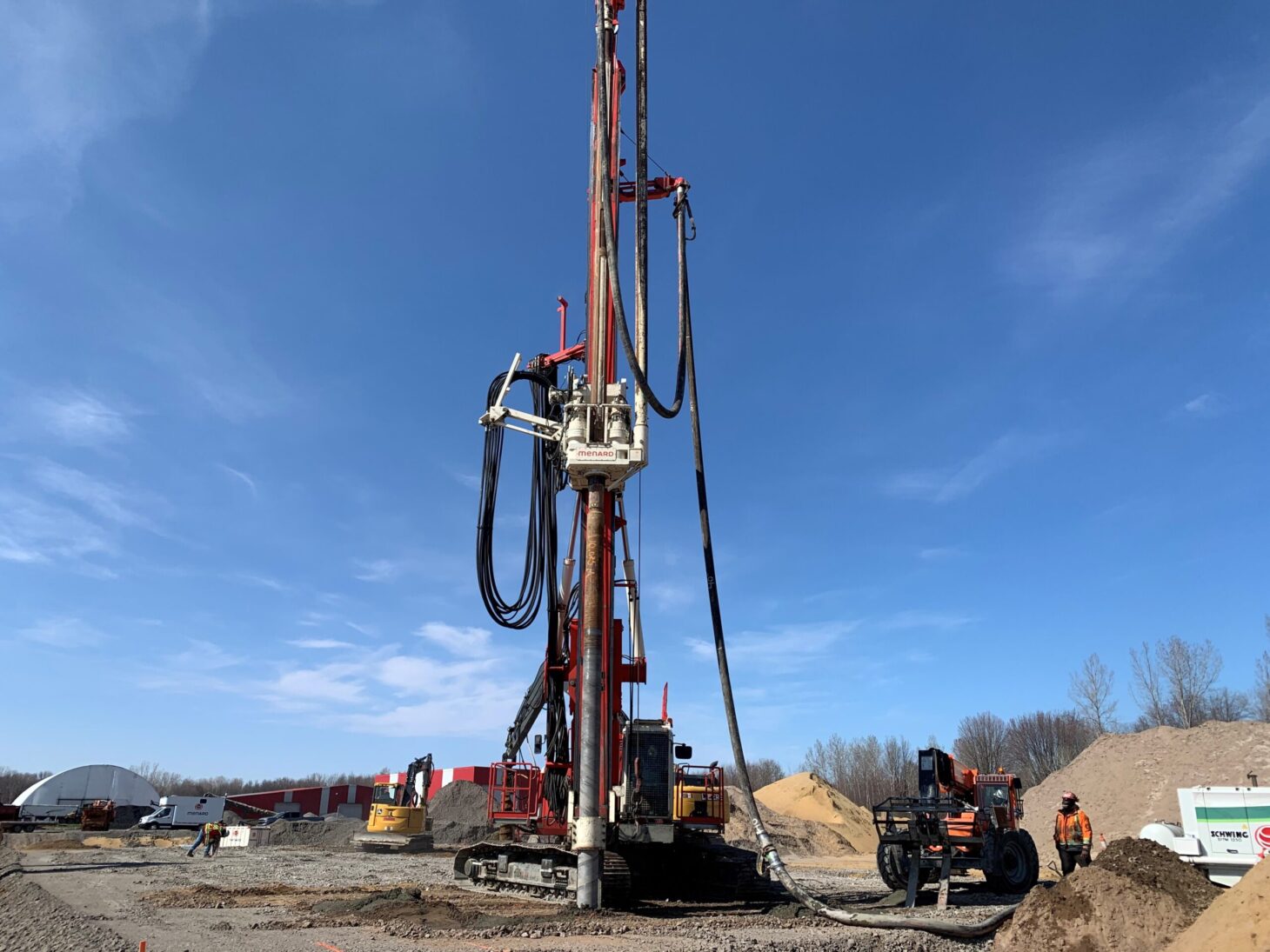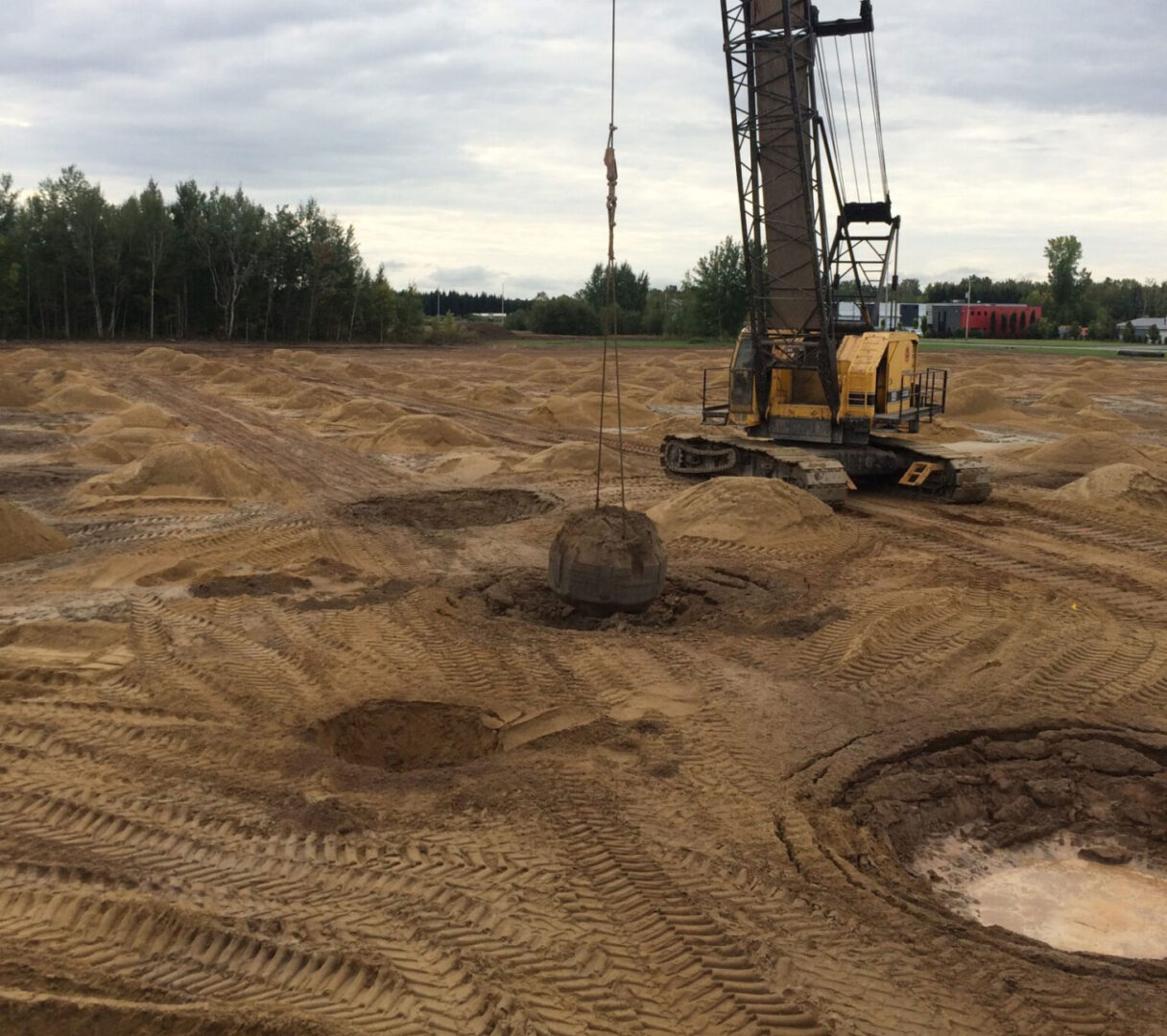
With well over 50 years of experience as a ground improvement specialty contractor, Menard Canada (previously known as Geopac) has been involved in many notable large-scale and complex soil improvement projects across Canada, working with a variety of stakeholders within the land development industry, including developers, designers and contractors.
Menard Canada is best known for its proprietary ground improvement technologies that help eliminate the need for deep foundations traditionally used to support heavy structures in challenging soil conditions. Additionally, its systems help mitigate the environmental damage and costly effects of removing soil.Since its start many years ago, the company has pioneered and introduced several innovative ground improvement technologies. These technologies have proven so effective that they are now used worldwide for in-situ geotechnical testing and for improving the poorest soil conditions.
Through development and implementation of tailored geotechnical solutions, Menard Canada helps those trying to build on structurally unstable soils. Its innovative solutions are custom-designed to help solve the most challenging conditions, whether the problems stem from an environmental, structural or civil engineering perspective. The added benefits of ground improvement – aside from mitigating challenging soil conditions – are a reduced carbon footprint and overall foundation costs.
Malt processing facility
One of the many notable projects Menard Canada successfully aided in completing was constructing a $44-million malt processing facility in Bécancour, Que. The scope of work on this project included enormous tanks, a processing area and a large warehouse, all requiring ground improvement. The total footprint of the construction was more than 17,540 square metres, with a treatment depth of up to 10 metres.
Some of the technical and logistical challenges of this project, identified during the geotechnical investigation, included a significant risk of liquefaction and insufficient bearing capacity throughout the entire project site’s soils, posing a substantial risk to the project if not drastically improved.
The company has pioneered and introduced several innovative ground improvement technologies. These technologies have proven so effective that they are now used worldwide for both in-situ geotechnical testing and improving the poorest soil conditions.
The soil conditions posed so many challenges that the site required a combination of different ground improvement techniques to achieve design criteria – something that is common for Menard Canada when faced with multiple soil challenges. Dynamic compaction was selected to improve the bearing capacity of footings and slabs, and to help mitigate liquefaction. At the same time, concrete rigid inclusions, known as Controlled Modulus Columns (CMCs), were used for a drastic reduction of settlement of heavily-loaded rafts during the second phase of soil improvement.
A winning combination
For the dynamic compaction phase, a crawler crane was used with a pounder weighing approximately 20 tonnes. For the CMCs, a drill rig was used with a specific displacement auger. The CMC ground improvement system was designed with a 20-megapascal concrete mix injected directly into the soil using Menard’s custom-made drill rig.
“The general contractor was Frare et Gallant,” said Menard Canada project manager Adrien Viateau. “Menard Canada installed 300- and 400-millimetre-diameter CMCs to depths exceeding 10 metres. They are combined with a load transfer platform to support heavily-loaded rafts.

“Also, deep CMC cut-off, up to five metres from the working platform, was a challenge which required us to adapt the methodology.”
The project goal was to reduce settlement over three different rafts with loads between 65 kilopascals and 139 kilopascals over a surface of 1,784 square metres. Compared to more traditional methods, the CMC technique has proven to be much more carbon-friendly, time- and cost-effective, as in this project.
Environmental measures
When it comes to environmental and sustainable measures, Viateau says ground improvement, in essence, is an ecological solution.
“Dynamic compaction is the most environmentally friendly solution. Soil remains in place and is improved with minimum means,” he said. “Also, the combination of CMCs with slab-on-grade and conventional foundations has a better carbon footprint compared to deep foundations and structural slab, and related elements (pile caps).”